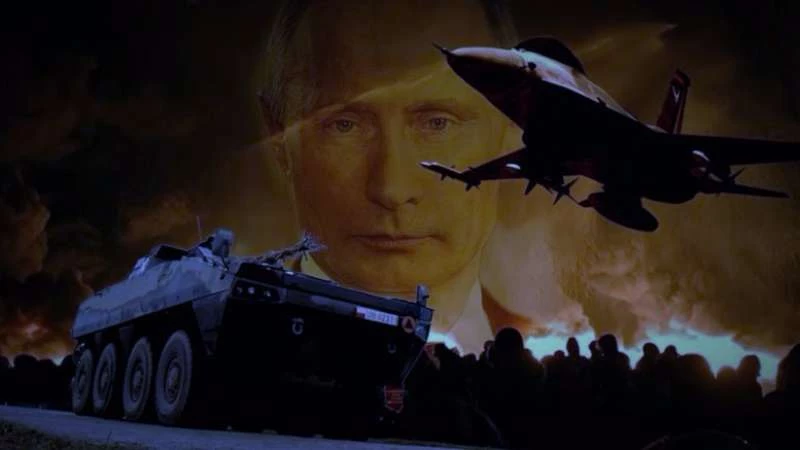This involvement started directly after the secret visit of the adviser to the Iran’s Ali Khamenei to Moscow. The intervention was implemented without US objection. Russia, by invading with its troops the Syrian territory, changed the Syrian crisis from a regional conflict after the people’s uprising against the dictator, to a card on the table of Russian negotiations with the West and connected it with the Ukrainian crisis. The Russians found the opportunity to make up for the loss of their ally in Libya, Muammar Gaddafi, by the NATO forces after the revolution against him. On the other hand, the United States reached an agreement with the Iranian side regarding the Iranian nuclear project the previous summer, in which one of the most important points − which was not published but I came to know through a French politician − was that the US will not be involved directly into the Syrian crisis to topple Assad.
Russia, during the previous eleven months, supported Assad forces and the sectarian militias enhancing their military momentum by heavy air strikes and even used internationally forbidden weapons, such as cluster and phosphorous bombs. It also condoned the use of Assad’s chemical weapons (chlorine gas), specifically in the province of Idlib.
Despite the Russian support and the use of all these weapons, the Assad regime could not control but 1.8% of the Syrian territory. The most important victory for the Russians in Syria was the recovery of the city of Palmyra from the hands of ISIS. But, if we look into the details, we will find that the damage inflicted in the historic city caused by the Russian air strikes were more severe than what ISIS destroyed, in addition to the bombings which caused the displacement of more than 30.000 of the city inhabitants who until today are living in camps on the Syrian-Jordanian border under difficult humanitarian conditions.
During the first months of the Russian intervention in Syria, the daily operational cost for Russia is estimated between 5 to 10 million US dollars. With the passage of time and the increasing international and internal pressure by the opposition forces led by Fatth Army, specifically in the southern countryside of Aleppo, daily costs increased to more than 50 million US dollars. As Russia began to lose soldiers, with the most recent the downing of the helicopter in the southern countryside of Aleppo last month, the number of "announced" dead Russian militants reached 20. Therefore, the Russians started to consider more and more a political solution to the crisis to get out of the Syrian quagmire with the least losses and the highest gains.
The military presence in Syria gave Russia the upper hand in any political agreement to end the Syrian crisis. Even the US special envoy for Syria Michael Ratney asked the representatives of the Syrian opposition, during a closed-door meeting about a month ago, to negotiate directly with the Russians. Additionally, while Russian-Turkish relations returned to normality after the failed coup, Turkish-American relations entered a dark tunnel. This gave the Russians an impetus to start drafting a political agreement for the resolution of the Syrian crisis and was the first step to reach an understanding with the Turks on many points, except the Turkish adherence to the non-acceptance of Assad in power for a transitional period. Within this understanding was the Russian approval for the operation "Euphrates Shield" in northern Syria, which has made significant progress in recent days by connecting Jarabulus with the city of Azaz in the northern countryside of Aleppo.
On the other hand, the Russians showed little flexibility in the recent closed Geneva negotiating sessions held between foreign ministers John Kerry and Sergei Lavrov and the presence of Staffan de Mistura last week on a 48-hour truce in Aleppo. Despite the failure to reach a final agreement, however, the Russians and the Americans gave the green light to de Mistura to start drafting the road map to resolve the Syrian crisis and the details of the transitional phase, which includes the formation of national unity government with full executive powers, and Assad’s stay with formal powers within the transitional phase which extends for 18 months.
What happened during the previous two days of bilateral meetings between a number of influential leaders in the Syrian crisis, and specifically the meeting of Prince Mohammad bin Salman with the Russian President Vladimir Putin, have a great effect on the future solution of the Syrian crisis. Furthermore, the visit of the King of Bahrain to Moscow is directly linked to the willingness of Saudi Arabia to re-open a channel with the Russians, after a period of interruption, which will be in favor of the interests of the Syrian revolution.
Eva J. Koulouriotis is Greek political analyst specialized in Middle East. She has studied Economics, Public Policy and Business Administration. She is a member of the Greek political party of “Nea Demokratia”, head of the Women’s entrepreneurship section. Twitter: @evacool_f, Facebook: @evakoulouriotis



التعليقات (0)